Saturn is one of the most beautiful objects in the night sky. Anyone who has viewed it through a telescope probably remembers the moment. I have shown it to many people through my telescope. It is fun to hear them exclaim about it. Young and old alike are moved by that experience.
The feature people enjoy the most is the ring structure. They were first observed by Galileo July 30, 1610. Although, he did not describe them as rings. Instead, they appeared to him as two separate and nearby bodies on either side of Saturn in this arrangement oOo.
The spacecraft Voyager 1 and 2 in 1981 and 1980 passed near the rings and gave us the most astounding views up to that time. The detail was amazing. The views captivated our imaginations and prompted scientists to plan space missions to investigate further. This image below shows the main features of the ring structure.
This post is mainly about the E ring with the moon Enceladus within it. The ring is composed of ice crystals and dust. It is much farther out than the main rings and is not bright or clearly defined. It is more nebulous. Sunlight from behind is the best way to see the E ring. This next image from 2006 is enhanced to bring out some detail. It is oriented similar to the image above. The very bright object in the ring is the moon Enceladus. Other bright dots are distant stars. Notice the wispy tendrils near Enceladus.
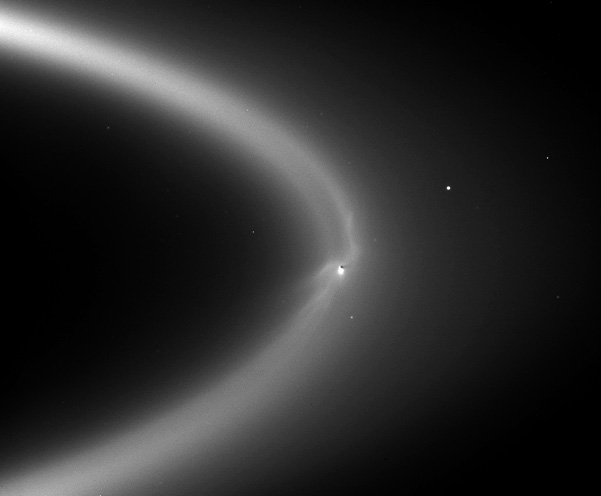
NASA-ESA | Cassini Spacecraft
The Cassini-Huygens mission launch was in 1997. For 7 years it was en-route to Saturn. For the past 10 years, the spacecraft has orbited the planet and made close passes to many of the moons. The moon Enceladus is of special interest. Close flybys starting in 2005 showed surface ice with fractures, folds, and fissures. The south polar region revealed several parallel cracks with geyser plumes of ice rising high above the surface.
The possible mechanism (cryo-volcanism) of the geysers shown here shows heating from flexing of the rock layers below the ice and water. The flexing comes from the tide forces felt by the moon from Saturn. It is the same mechanism our Moon feels from Earth. But, it is stronger due to the large mass of Saturn. The heat liquifies some water ice and vents it out through the cracks above.

NASA-JPL
Multiple flyby passes have given scientists a better idea of the source of these geysers. This brief video shows a model of several of the plumes at the south pole of Enceladus. The model allows the scientists to show how the geysers put ice and dust high into the space above the surface.
On April 14, 2015, JPL scientists published the results of a comparison between their model of geyser behavior and images of the real geyser emissions into the E ring. They felt their model accurately described the behavior and are confidant they have a solid understanding of the process. Ice crystals trajectories were mapped from the south polar region. The paths they followed in the model matched almost perfectly the paths in the real images. Below is the real image followed by the result of the model.
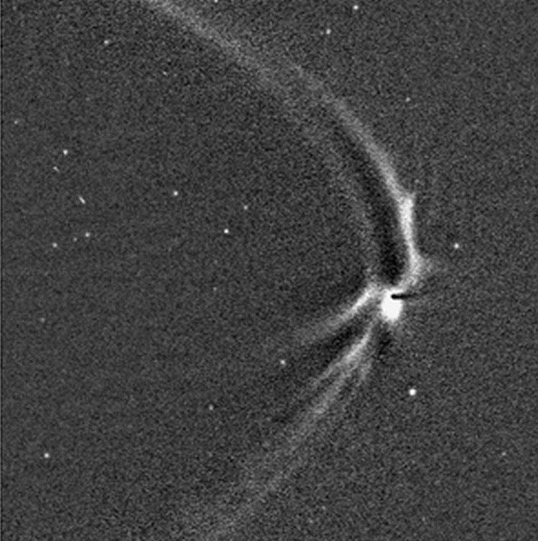
NASA/JPL-Caltech | Imaged 2006
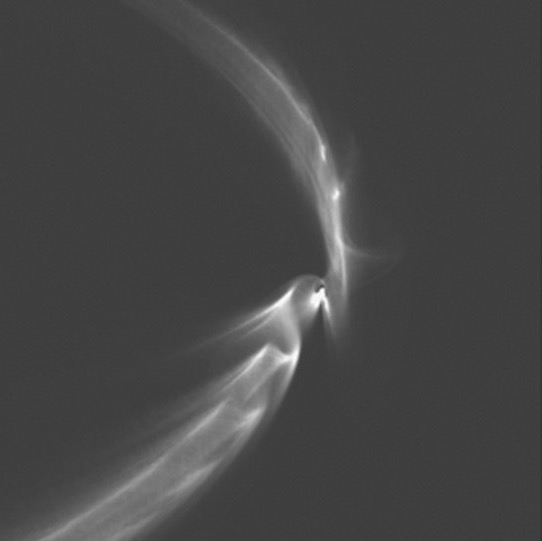
NASA/JPL-Caltech | Modeled 2015
Here is another viewpoint at a different date and part of the orbit.
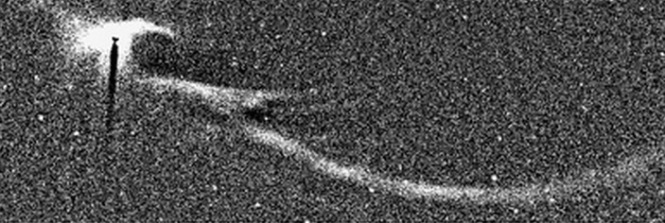
NASA/JPL-Caltech | Imaged 2013

NASA/JPL-Caltech | Modeled 2015
The model used trajectories of ice ejected from the 36 most active geysers. That is 50% of the geysers on the moon. The close match between real and modeled images supports the idea that the wispy tendrils are produced by the moon’s geysers and they carry ice that adds to the E ring.

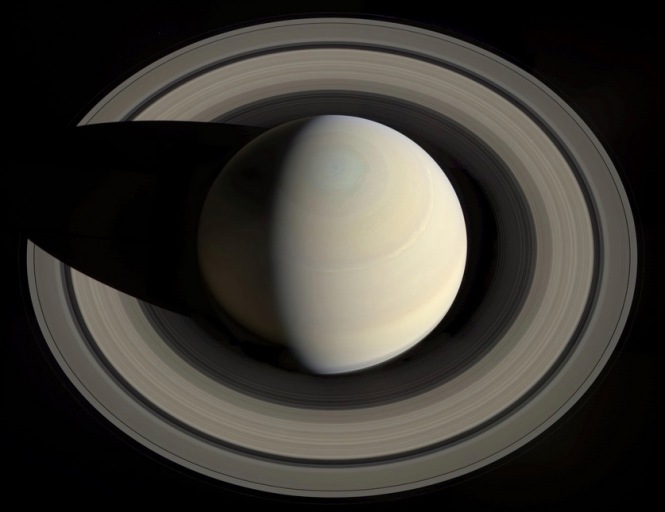
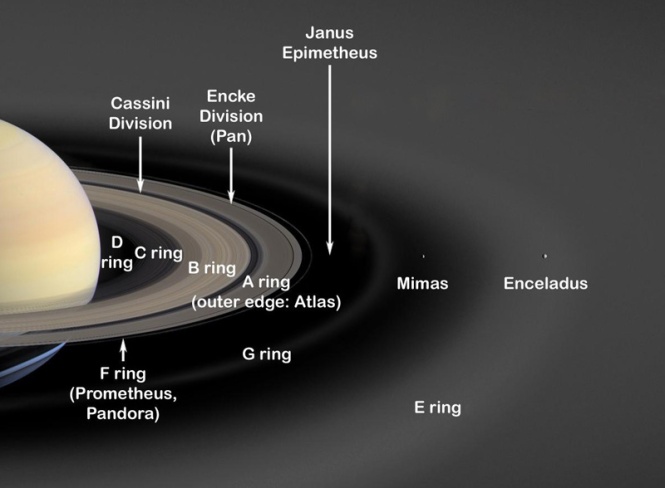
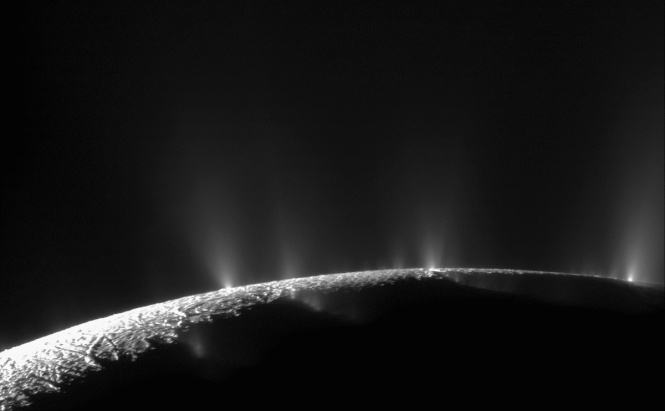
Nice one
Ice geysers~what a beautiful thing! I am impressed by how well the scientists were able to model what is happening.
It does appear they got it right. There are a lot of very smart people out there. That’s good.
The production of basic knowledge like this is, I submit, a shining demonstration of the better instincts of our species. Despite war, cruelty, and superstition, the collective expenditure of resources for discovery and understanding serves as counterpoint. Great pictures. Well done, Jim.
I couldn’t agree more. Astronomy is but one of the areas of study and research that shows the best side of human nature. It is exciting and uplifting to see.
Thanks for your kind words, Jim. Have a good weekend.
You know what they say: Saturn runs rings around the other planets. It’s the last of the planets to impart a disposition to people: mercurial, venereal, earthy (or down-to-earth), martial, saturnine.
Not a word I’ve used. I can say the sky is saturnine this morning with an approaching storm. I have known some people who were saturnine. I will try to use it more in the future. I bet I get some funny looks.
If it’s funny looks you’re after, try hitting people with this chant:
As 4 and 4 do not make 9,
I just won’t be saturnine.
Could these b&w images be converted to color? What type of telescope do you have, and recommend?
Only if the originals were done with different wavelength filters. But, there wouldn’t be much color, if any, to see. It is mostly dust, dirt, and ice. Lots of grey scale.
My telescope is the Astroscan. I bought it back in the late 80s. It is simple. Quick to set up. And, has very good optics. It is a good basic telescope.
Click to access Astroscan-201007.pdf
Thanks, I looked it up at B&H Video but they don’t sell it there. But to eventually attach a DSLR, I looked at this one:
http://www.bhphotovideo.com/c/product/440807-REG/Celestron_11036_NexStar_5_SE_5_0_127mm.html
A bit on the expensive side, but do you think it’s easier to take pictures with this one? It must be plugged in at all times. This model is said to be the best quality between the cheapest and the most expensive models.
Actually, it is pricey. Is there something else you recommend? Is having a Manual Altazimuth Mount a major disadvantage vs. not having one? It brings the price down, but lacks the stability of the motorized one? This one is a step down, but still has a motorized Altazimuth Mount :
http://www.bhphotovideo.com/c/product/681797-REG/Celestron_22097_NexStar_127SLT_Computerized_Telescope.html
Another more reasonable one is this one, with still a Computerized Altazimuth Mount, but less focal length;
http://www.bhphotovideo.com/c/product/681812-REG/Celestron_31150_Computerized_Telescope_114LCM.html
If you are wanting to mount a camera, I would not expect the last one to be as stable or steady as the first two. The second one should be able to do the job. It would be good for general viewing and camera imaging.
Don’t be sold by high magnifications. Most viewing is easier and done on low to medium power. An important feature is ease of use. You don’t want to be taking a long time to get ready and take it down. Mine is up and ready within 2-3 minutes. It is in a cabinet in the garage, ready to go.
Many years ago, at a school I taught at, we had 2 scopes by that company. One was a 5″ the other was an 8″. They are very fine instruments. One could take nice long exposure images since it would track the sky while plugged in.
Thanks Jim, I might consider the second one at some point. Thanks for your advice.